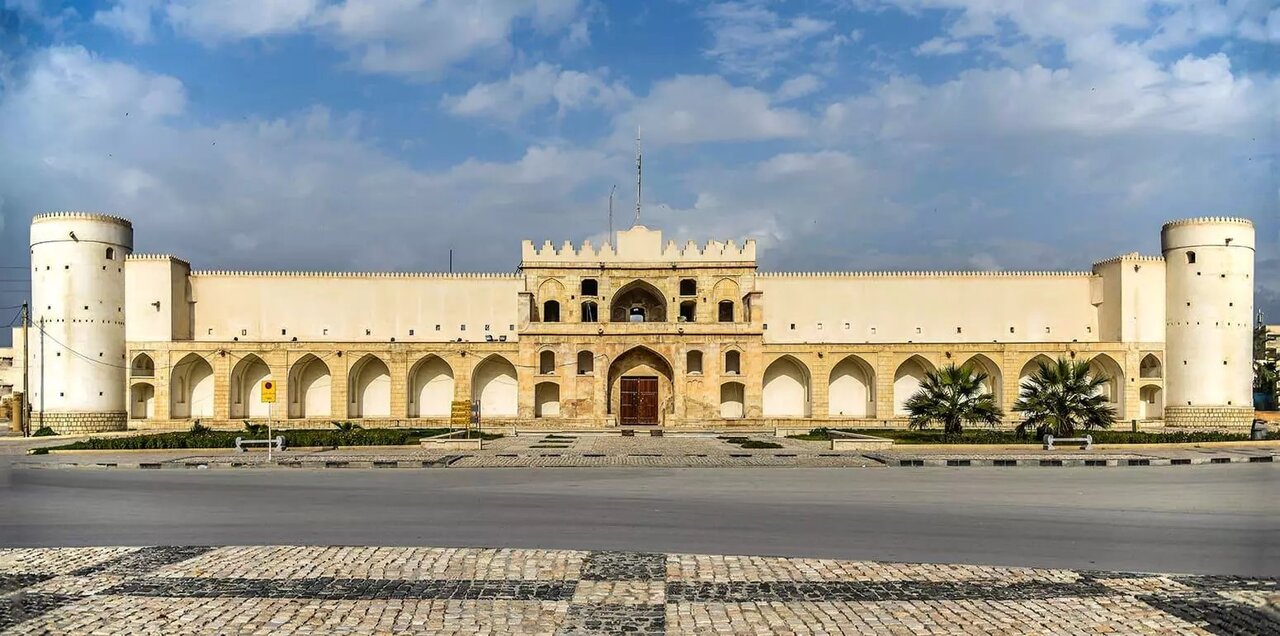Moshir-ol-Molk Caravanserai in southwest Iran will be restored with state funds

TEHRAN – The centuries-old Moshir-ol-Molk Caravanserai, which is located in Iran’s Bushehr province, will be restored with government funds.
The first phase of restoration work has commenced on Moshir al-Molk Caravanserai in Bushehr’s Borazjan after years of legal impasse, CHTN reported on Tuesday.
The $40,000 (20 billion rials) project is carried out under the supervision of the Cultural Heritage, Tourism, and Handicrafts Ministry after it reached an agreement with the Endowments and Charity Affairs Organization, which possesses the land of the caravanserai.
Earlier this year, the tourism minister Ezzatollah Zarghami inspected the old caravanserai in a formal visit to organize an urgent restoration to safeguard the vast monument.
Having a rectangular form, the monument has four towers and is more than twelve meters high. The towers provided safety for the people who rested inside the building. The building itself is about four thousand and two hundred square meters.
The material used in this building is mostly stones and Sarouj, a type of water-resistant mortar, which makes it stronger in comparison with other buildings of its kind. In addition to the façade of the caravanserai that is covered with stones, the outside and inside of the entrance are covered with yellow carved stones. The entrance is located on the southern side, where there are three stories. The building is two-story on its other parts, and each story has two alcoves. There are two large and small yards in this caravanserai and sixty-eight rooms that have decreased and increased in number at different times.
Iran has nominated 56 caravansaries for a collective inscription on the UNESCO list for World Heritage, Zarghami’s deputy for cultural heritage said on Saturday. “[A selection of] 56 Iranian caravanserais will be registered on the UNESCO list… and Sa’d al-Saltaneh caravansary of Qazvin shines like a jewel among them,” Ali Darabi said.
For many travelers to Iran, staying in or even visiting a caravanserai can be a wide experience; they have an opportunity to feel the past, a time travel back into a forgotten age!
Caravanserai or caravansary is a compound word combining “caravan” with “sara”; the former stands for a group of travelers and the latter means the building. They often had massive portals supported by elevated load-bearing walls. Guest rooms were constructed around the courtyard and stables behind them, with doors in the corners of the yard.
Passing major roads in the country, one may see crumbling caravanserais, many of which were abandoned for ages. In the Information Age, such guest houses have largely lost their actual usage.
Staying at or even just visiting a centuries-old caravanserai can be a memorable experience for many visitors to Iran because it allows them to experience the past and travel back in time. Narratives say it is not hard to fancy the hustle and bustle of merchants bargaining on prices, recounting their arduous journeys to one another while their camels chew hay!
The earliest caravanserais in Iran were built during the Achaemenid era (550 - 330 BC). Centuries later, when Shah Abbas I assumed power from 1588 to 1629, he ordered the construction of a network of caravanserais across the country. Such roadside inns were once constructed along ancient caravan routes in the Muslim world to shelter people, their goods, and animals. The former Silk Road may be the most famous example dotted by caravanserais.
AFM
